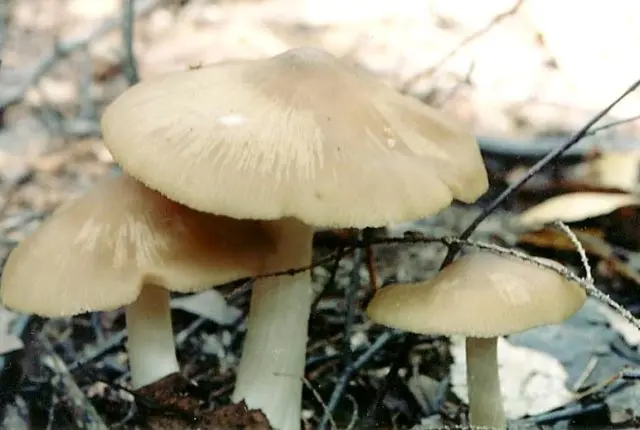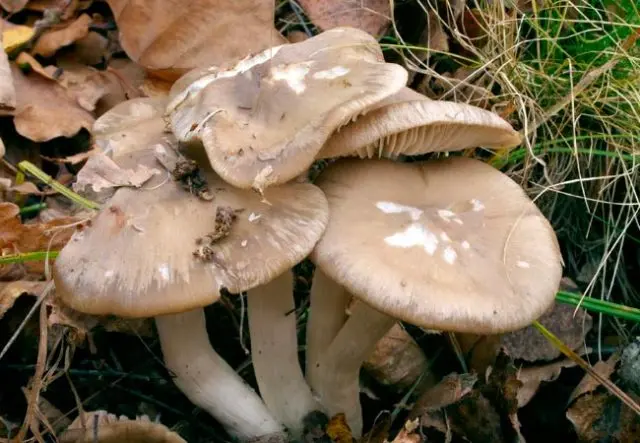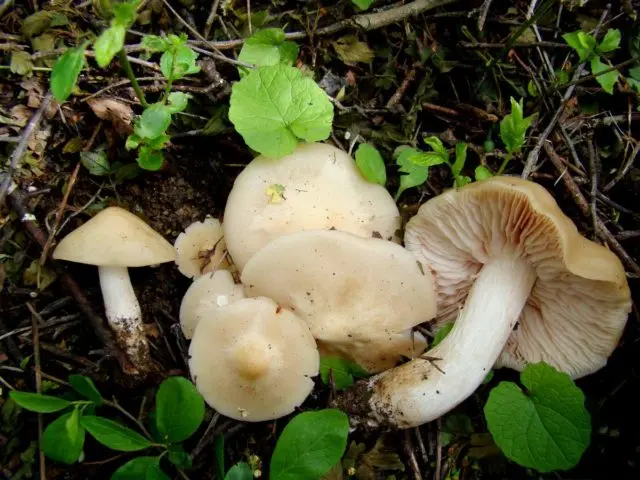Contents
Entoloma gray-white, or lead-white, grows in the middle lane. Belongs to a large family of Entoloma, a synonym for Entoloma lividoalbum, in the popular science literature – pink-gray-white.
Description of Entoloma bluish-white
A large inedible mushroom gives the forest more variety. In order not to mistakenly put it in a basket during a quiet hunt, you should study its description in detail.

Cap Description
The hat of the entoloma is gray-white, large, from 3 to 10 cm wide. At first cone-shaped, later it opens, takes a slightly convex or flat-convex shape with a small tubercle in the middle, dark or light. Sometimes, instead of a bulge, a depression forms, and the edges rise. The top is painted in yellow-brown shades, divided into circular zones. In dry weather, the color is lighter, shades of ocher, zoning is more pronounced. Skin is slippery after rain.
Frequent plates are initially whitish, then cream, dark pink, of uneven width. The dense pulp is white, thicker in the center, translucent along the edges. There is a musty smell.

Description of the leg
The height of the cylindrical club-shaped leg of the bluish-white entoloma is 3-10 cm, the diameter is 8-20 mm.

Other signs:
- more often curved;
- on a smooth surface on top of small fibrous flakes;
- white or light cream;
- inside solid white pulp.
Is the mushroom edible or not?
The fruiting body contains toxic substances, Entoloma bluish-white, according to experts, is inedible. This is also indicated by an unpleasant odor.
Where and how to grow
Lead-white entoloma is rare, but it grows in different parts of Europe:
- on the edges of deciduous forests or in large clearings, along forest roadsides;
- in parks;
- in gardens with uncultivated soil.
The time of appearance is from the 20th of August to the beginning, mid-October.
Twins and their differences
When collecting garden Entoloma, which is common in many areas, beginners can take a bluish-white one instead of a conditionally edible specimen with a beige-gray hat, 5-10 cm in diameter. But their timing of appearance in the forest is different – the garden is harvested in late spring.

Another inedible species, Entoloma sagging, appears at the same time, by the end of summer and in September. The hat is similar – gray-brown, large, and the leg is thin, gray. The smell is fresh.

Conclusion
Entoloma bluish-white, being a non-edible mushroom, differs from usable mushrooms not so much in appearance as in terms of timing. Other twins also do not collect.









